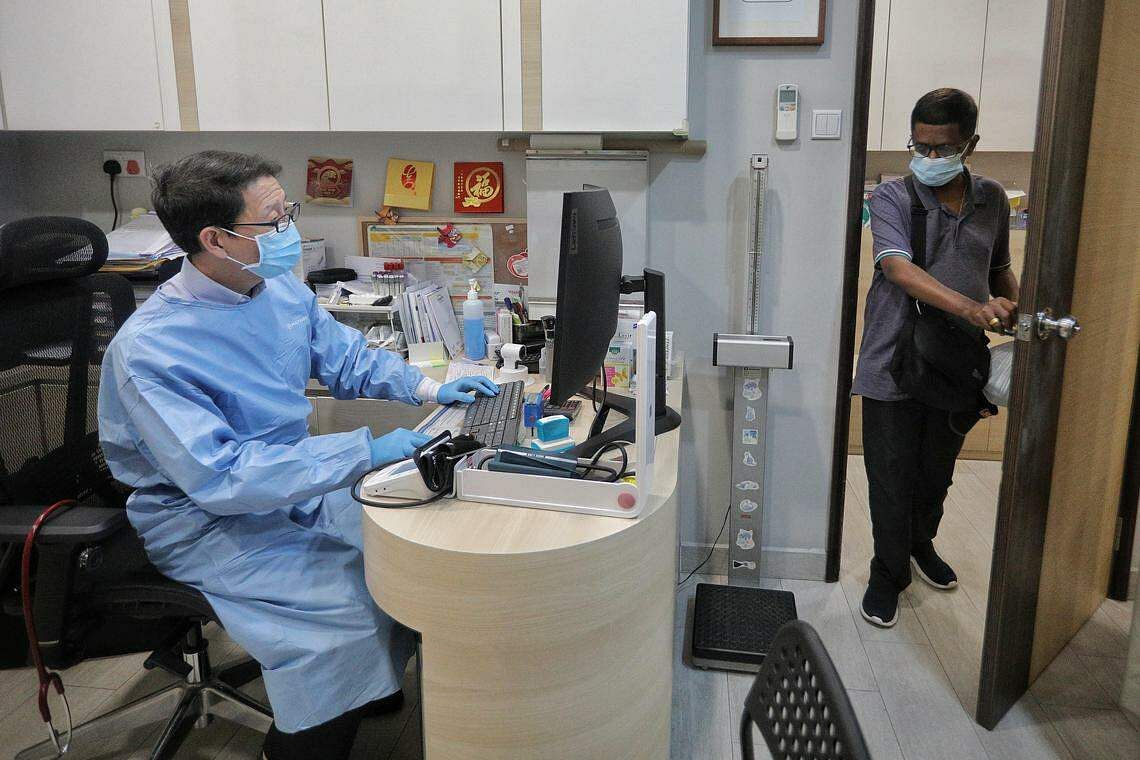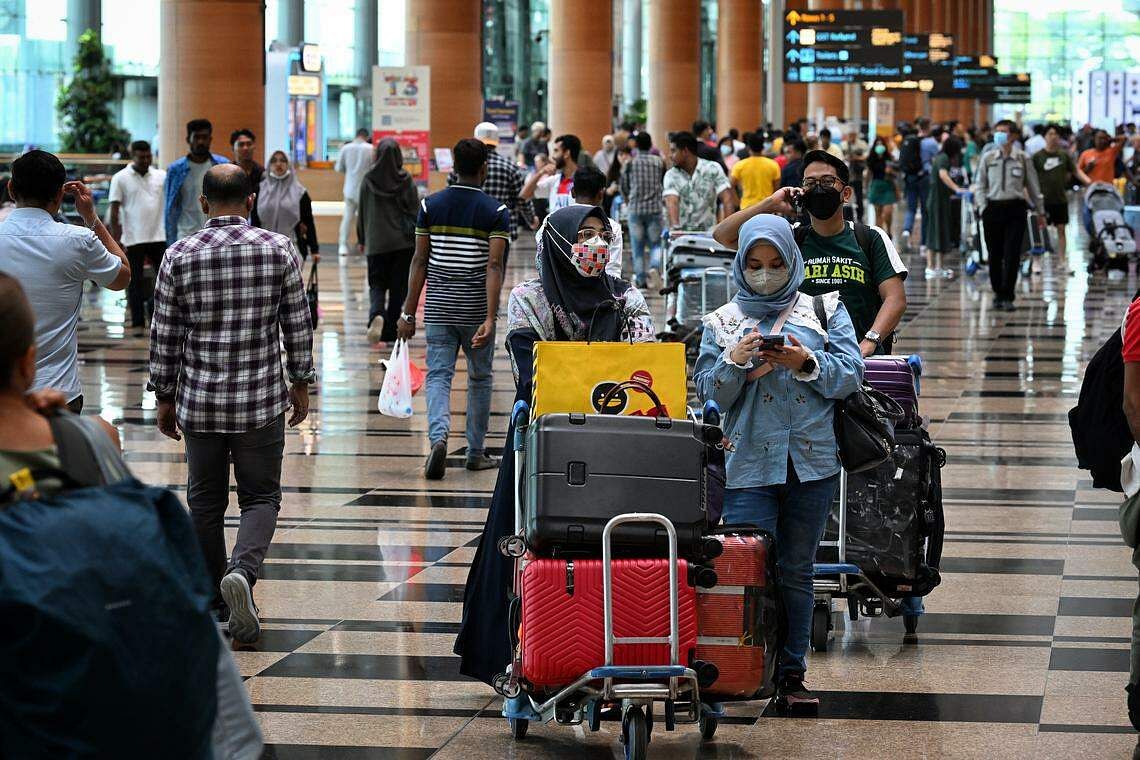SINGAPORE - Parliament scrutinised the budgets of the ministries of Transport, Health as well as Social and Family Development on Friday. Here are some of the key announcements.
1. Safer streets for pedestrians, cyclists

Wider footpaths, barrier-free crossings and measures to slow motorists down will soon come to neighbourhoods in Ang Mo Kio, Bukit Batok West, Tampines, Toa Payoh and West Coast, under a new initiative to create Friendly Streets. The aim is to make streets less vehicle-centric and more inclusive to provide a safer and more pleasant walking and cycling experience.
Why it matters
Friendly Streets is a culmination of existing efforts to remodel road spaces here, and represents a major step in Singapore’s car-lite vision and push towards public transport and active mobility. The hope is to reduce the number of cars on the road, so that public spaces can be devoted to other uses and become more vibrant. Ideas gathered from public engagements will be incorporated into the design of each Friendly Street, and trials will start in the five selected towns by 2025.
2. Sign up for health plan, get $20 vouchers

Singapore residents who complete the first health plan consultation with their enrolled general practitioner or polyclinic under the Healthier SG programme will receive 3,000 Healthpoints through the Healthy 365 app. These points can be exchanged for $20 worth of vouchers from participating merchants, such as FairPrice. Those with chronic illnesses who enrol with a general practitioner (GP) clinic can opt for a new subsidy tier to get selected drugs at prices similar to those in polyclinics.
Why it matters
Healthier SG is a major transformation of the healthcare system, and will shift the centre of gravity of care from hospitals to the community as Singapore ages and healthcare costs go up. The incentives will hopefully get people to sign up so they can build a long-term relationship with their primary care doctor, who will help them take charge of their health. With the new subsidy tier, those with high chronic medication needs and bills can enrol with their regular GP clinics, and get some of their drugs there at prices comparable to those charged at polyclinics.
3. Supporting home care

Patients who receive treatment at home for chronic conditions such as diabetes and hypertension will be able to tap their MediSave to pay for home-care services from the second half of 2023. They will be able to use up to $500 or $700 yearly, depending on the complexity of their condition. For a start, this will apply to 25 home medical and home nursing providers that are receiving funding and support from the Ministry of Health (MOH).
Why it matters
Currently, MOH’s financing coverage varies based on the setting and premises where care is delivered – such as whether it is in polyclinics or hospitals. But as the nation grows older and people are encouraged to age in the community, funding is being extended beyond hospitals to wherever healthcare services are delivered. The move is set to benefit close to 6,800 patients a year.
READ MORE HERE: Patients receiving home care can use MediSave to pay bills from second half of 2023
4. Changi Airport back on track

Passenger traffic at Changi Airport should return to pre-pandemic levels by 2024, or possibly earlier, with Chinese and Singapore carriers expected to resume more flight services in the coming months. Passenger volumes, flights and city links at Changi are now at 80 per cent of pre-Covid-19 levels, while flights at Seletar Airport have recovered fully. The aviation workforce is also expected to be restored by 2023. Construction of Terminal 5 (T5), which was put on hold for two years during the pandemic, is now expected to start by 2025.
Why it matters
Singapore’s position as a global air hub means aviation is a key pillar of the economy. Changi Airport’s recovery has also been a bellwether for the Republic’s success in overcoming the pandemic. The reopening of China’s borders was the final piece of the puzzle, with flights to and from the country accounting for 10 per cent of the airport’s pre-Covid-19 capacity. Changi has now set its sights on greater ambitions. T5, which is expected to handle 50 million passengers a year when operational in the mid-2030s, will provide much-needed room for growth.
5. Better work, social support for people with disabilities

People with disabilities who live in the west will soon get more access to training and nearby jobs with an Enabling Business Hub in Jurong West, while those in the east will have more community activities and respite care options with an Enabling Services Hub in Tampines, with a satellite site in Bedok.
Why it matters
Many of those with disabilities want to be gainfully employed and socially active, but may find it hard to venture far from home. The two pilot programmes aim to bring social activities, courses and jobs closer to them, while increasing outreach to raise awareness of existing disability services. The hubs will also encourage inclusiveness by creating opportunities for people with and without disabilities to mingle.
If you have a few more minutes…
1. Full steam ahead at Tuas Port
Construction of the $20 billion Tuas Port is continuing apace, with land reclamation works for the second phase of the four-phase project about 60 per cent complete. The planning and design of phase three has begun, and reclamation work for that section is slated to be done in the mid-2030s. With thousands of workers expected to be affected by the eventual move to the mega port, a committee comprising those from government agencies, industry partners and unions will be formed to improve the available transport options.
2. Cutting business costs at checkpoints
Singapore is reviewing whether it can streamline transshipment procedures at land checkpoints, by reducing the number of permits that companies need to apply for. This could mean potential cost savings of up to $40 for each transshipment, and total savings for the industry amounting to $2 million annually.
3. Stopping abuse of healthcare workers
Almost one in three healthcare workers witnessed or experienced abuse at least once a week, a work group looking into abuse of healthcare staff has found. Among the steps being considered are formulating a clear definition of abuse and harassment, and standardising how public healthcare institutions deal with such cases. MOH said it will give an update on its plans to tackle this problem later in March.
4. Advisory on screen use by children
MOH has introduced an advisory on screen use by children up to the age of 12. Developed by an expert panel made up of healthcare and education professionals, the advisory provides tips such as discouraging screen use for children under 18 months old – except for interactive video-chatting – and developing a timetable for families to find a balance between screen use and other activities like family bonding.
